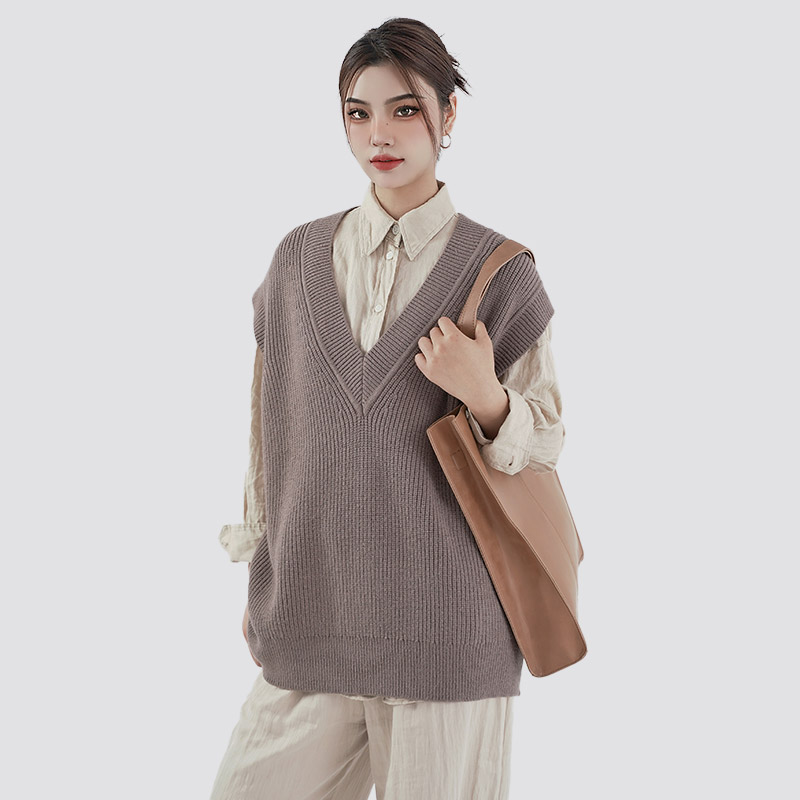What role does the plaid pattern play in the structural integrity and flexibility of the fabric in short plaid vests?
The plaid pattern in short plaid vests, or any garment made from plaid fabric, plays both a functional and aesthetic role in the fabric’s structure, flexibility, and overall performance. The way the plaid pattern is woven into the fabric can impact how the fabric behaves in terms of durability, movement, and comfort. Here's how the pattern specifically influences the fabric's structural integrity and flexibility:
1. Weave Structure and Strength
Tightly Woven Plaid: The plaid pattern is typically achieved through a specific weaving technique, where colored threads (usually warp and weft) are interlaced in a regular pattern. Depending on the tightness of this weave, the fabric's structural integrity can be enhanced. A tight, dense weave in plaid fabric results in a more durable and sturdy textile, which contributes to the overall strength and longevity of the short plaid vest.
Patterned Reinforcement: In some cases, the alternating colors and the precise intersections of horizontal and vertical stripes (which form the plaid pattern) add an extra layer of structural support. The consistent pattern of checks or lines can help distribute stress more evenly across the fabric, preventing it from tearing easily in high-stress areas such as the shoulders or sides of a vest.
2. Flexibility and Movement
Fabric Grain Direction: The plaid pattern is woven into the fabric at specific angles and orientations (often at right angles in classic plaid). This grain direction can influence how flexible the fabric is. When the fibers are aligned in different directions—horizontal and vertical in a plaid weave—they can stretch and move differently depending on the angle of the pattern.
Diagonal Plaid: For example, some plaid fabrics are woven in a diagonal or twill weave (a type of plaid) that gives the fabric more stretch and flexibility. This enhances the comfort of a short plaid vest, making it more adaptable to body movement without losing its shape. The diagonal nature of some plaids (as seen in tartan patterns, for instance) allows the fabric to bend more easily, providing increased comfort and fit for the wearer.
Balance of Stiffness and Flexibility: If the plaid fabric is made from stiffer materials like wool or heavy cotton, the pattern can create a balance between flexibility and structure. A stiffer weave can provide support and hold the vest's shape while still allowing for enough flexibility to move comfortably.
3. Stretch and Recovery
Elasticity in Pattern: In some modern plaid fabrics, especially those incorporating synthetic fibers like polyester or elastane, the pattern can contribute to how the fabric stretches and recovers. Plaid fabrics may contain a slight stretch in the weave, which allows for increased comfort and flexibility without sacrificing the structural integrity of the garment. The pattern's alignment with these stretch fibers ensures that the fabric can conform to the body's movements while maintaining the shape of the vest.
4. Visual Strength and Durability
Aesthetic Contribution: The visual "strength" of the plaid pattern can also make the fabric appear more durable. The regular, intersecting lines of the plaid can mask signs of wear or tear, such as stretching or minor fading, giving the impression of a more robust material. This can be particularly useful in garments like vests, where the aesthetic and functional elements of the fabric are equally important.
Pattern and Wear Resistance: Because plaid patterns are usually composed of various colors and textures, they can hide dirt, stains, and the effects of wear better than a solid fabric might. For example, any stretching or slight damage to the fabric is less noticeable within the grid of a plaid pattern, thus prolonging the visual life of the fabric.
5. Comfort and Fit
Patterned Flexibility for Tailoring: The plaid pattern can also influence how easily the fabric can be tailored to fit the wearer’s body. Plaid fabric is often used in garments like short vests because it can be sewn in a way that allows the fabric to follow the natural curves of the body. In high-quality vests, the pattern can be matched at seams to create a clean, flattering fit. The flexibility of the fabric (depending on the weave) allows for better ease of movement while still holding the shape of the garment.
Diagonality and Drapability: If the plaid pattern is angled, it can affect the way the fabric drapes over the body. A plaid pattern on a bias (diagonal) allows the fabric to have a little more flow and movement, contributing to a more comfortable fit.
6. Pattern and Textile Innovations
Modern Plaid Variations: In addition to traditional woven plaid patterns, newer textile innovations use digital printing or knitted plaid patterns, which can influence how the fabric behaves. Knitted plaid fabrics, for instance, might offer more stretch and flexibility compared to woven plaid fabrics, contributing to an even more comfortable and adaptable fit for short vests.

 English
English 中文简体
中文简体 Español
Español












